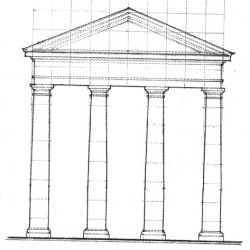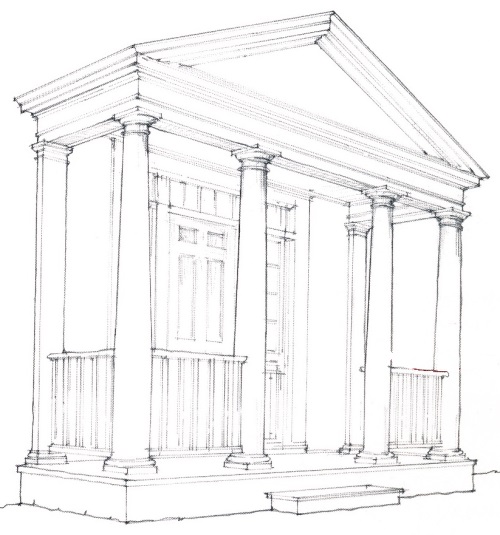Home Site Map - Techniques - Structure -
Columns
![]() How to form concrete columns.
How to form concrete columns.
Measurements
Main level
Overall
Column height with bases 11'11"
Column diameter
at bottom 1' 8-1/2"
Column diameter at top
1'5"
EPS
Column height with bases 11'11"
Starts tapering
from bottom 4'0"
EPS tube wall thickness at
bottom 3-1/4"
EPS tube wall thickness at top
1-1/2"
Structure
Concrete tube wall thickness 5"
Implementation notes
Use a CNC hotwire cutter to cut 1 foot tall rings of EPS of varying diameters. In the inner diameter is set by the width of concrete past the 4.5" drainpipe in the center. The outer EPS diameter is derived from the drawing of the column at each height to achieve the required taper.
Use 3/8" nylon threaded stud to get the spacing between the EPS ring and the inner drainpipe. Because it needs nuts and washers on both sides of the EPS wall, it will not be possible to get the threaded rod out after the concrete pour. Hence the rod, washers, and nuts all need to be nylon.
There will be 4 rods to the drainpipe at 0, 90, 180, and 270 degrees. The EPS collar rings slide over the plastic drainpipe.
Use PVC drainpipe rather than ABS because it is less expensive, thinner, and that's what I'm using for all the rain drainpipes. The drain pipes can only be 2" diameter.
Using the DWG file from NorthWestFoam, make a file with the different diameters.
The rings of EPS will have a cut through one side to get the CNC cutter into the center, so this will need to be glued.
NorthWestFoam can cut the tubes from the 8' CNC cutter into 1 foot long sections. They do this by rotating the cut block on the CNC machine. They say it is easy, ie negligible cost.
The tubes of EPS are cut from a square block of EPS. The offcuts round the outside will stay in place for the concrete pour. During the concrete pour it will look like the columns are square. The 2x4 bracing will be rectangular and not tapered so much easier. The offcut EPS will be removed after the pour to leave a round column.
The steps at 6" intervals help support the stucco, but the step is only about an 1/8".
Need to make a vertical cut the whole length of the column after the concrete pour in order to remove the outer square (with round in center) offcuts.
There are two potential uses for the offcuts...
1) The
center part can be used to make plant pots. The tube sections
are glued to a piece of flat EPS (eg 1.5" thick sheet) and then a
knife is used to cut the sheet to match the tube outside diameter.
If a deeper pot is required then two 6" high sections are glued
together.
2) The outer square plus all of the center round
can be used to make Carnation Walling. This is 2'x2'x6" blocks
rather than 8'x4'x8" but will be fine for low height concrete pours
such as 200 sqft 8' high outbuildings. The missing round area
is stuffed with scrap pieces of EPS that are foamed in place.
Bracing
The columns need to be braced with lumber. Put vertical 2x4s at 0, 90, 180, and 270 degrees and put rings of 14 gauge galvanized wire in notches round the outside. Also brace with 2x4s between the columns and back to the wall to keep everything in alignment and avoid getting bowed columns.
Using the EPS offcuts
Could perhaps use the EPS offcut outers to form columns in the yard. These of course would be solid stepped concrete on the outside so would need stucco on the outside to make them smooth. With the extra concrete cost it might be best to forget this idea.
A better idea would be to make concrete flower pots using the outer offcut and the inner EPS round offcut. The plant pots would all be slightly different sizes, but that can't be helped.
Personally I like the Tuscan style (as pictured below) because it is the cleanest look and the simplest to implement.

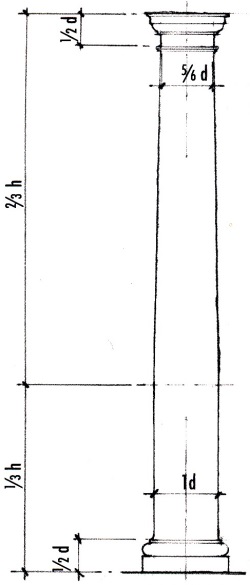
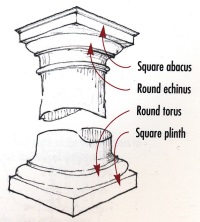
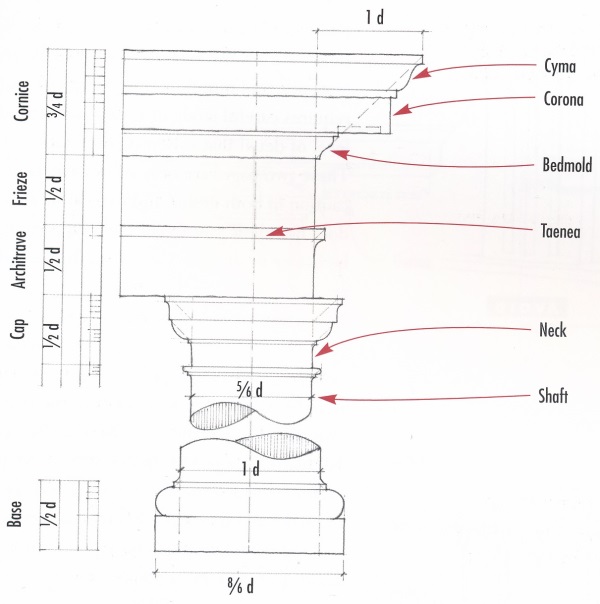
The Entablature (which is the Architrave+Frieze+Cornice) should have a height that is 1.75 times the column base diameter.
Column alignment
It is very important to get the column alignment correct. The edge of the top of the shaft aligns with the edge of the beam (Architrave) and the edge of the ceiling joists (Frieze).
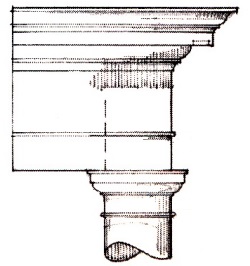
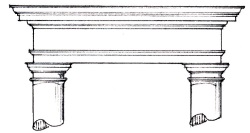
Columns do not support the ceiling directly. Instead they support a beam (Architrave) that is what actually supports the ceiling joists (Frieze). The beam is likely to be somewhere between 8" and 12" tall.
When there are two stories of columns, the alignment must be as per the following drawing.

Supporting decks as they attach to building
The front edge of decks are supported by columns, but visually the deck also needs to be supported as it attaches to the building. Either this needs to be an "engaged column" (round) or it needs to be a "Pilaster" (rectangular). Columns are the width of the tapered columns are project out between 5/8 and 3/4 of the column width. Pilasters are the width of the top of the column and project out from the wall between 1/5 and 1/4 of the column width.
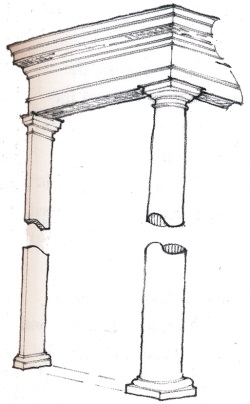
Portico tops
A "Tetrastyle Portico" has four columns. It was often used by the Greeks and the Etruscans for small structures such as public buildings and amphiprostyles. The Romans often used the four columned portico for their pseudoperipteral temples like the Temple of Portunus, and for amphiprostyle temples such as the Temple of Venus and Roma, and for the prostyle entrance porticos of large public buildings like the Basilica of Maxentius and Constantine. Roman provincial capitals also manifested tetrastyle construction, such as the Capitoline Temple in Volubilis. The North Portico of the White House is perhaps the most notable four-columned portico (ie "Tetrastyle Portico") in the United States.
In a typical Roman temple, the area of the portico top (ie the Entablature and Pediment) is the same as the area of the columns.
